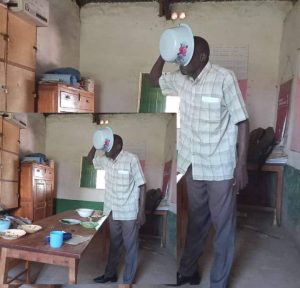After the Reasons Why the Teachers’ Staffroom Is Strictly Out of Bounds for Kenyan Students? Well,In Kenyan schools, the teachers’ staffroom is often an enigmatic place, sparking curiosity among students.

It’s a realm of mystery, a sanctum where educators retreat during breaks.
Have you ever wondered why students are prohibited from entering this sacred territory?
Let’s delve into the 10 compelling reasons that safeguard the sanctity of the teachers’ staffroom.
Reasons Why The Teachers’ Staffroom Is Strictly Out of Bounds for Kenyan Students
1. A Space for Professional Exchange
The staffroom serves as a space where teachers engage in professional discussions, sharing insights, and collaborating on teaching strategies. It fosters an environment conducive to enhancing the quality of education, away from distractions.
2. Privacy and Rest
Teachers need a private space for relaxation and unwinding during their short breaks. The staffroom provides them the solitude they require to recharge for the rigorous demands of the classroom.
3. Maintaining Order
Allowing students into the staffroom could disrupt its organized atmosphere. The staffroom is where educators plan their lessons, review schedules, and create a peaceful environment that sets the tone for the entire school.
4. Protecting Resources
The staffroom houses sensitive materials, such as exam papers, grading materials, and teaching resources. Restricting student access prevents any potential tampering or unauthorized access.
5. Avoiding Distractions
School staffrooms are designed to minimize distractions. Allowing students in could lead to noise and disturbances that could hinder teachers’ work, ultimately impacting the quality of education.
6. Encouraging Respect for Authority
Prohibiting access reinforces the boundary between teachers and students, fostering a culture of respect for authority. It underscores the distinction between the roles and responsibilities of educators and learners.
7. Safety Concerns
Some teaching materials might be hazardous if mishandled. The staffroom often contains equipment, chemicals, or tools that should not be accessed without proper supervision, ensuring the safety of students.
8. Teacher Well-being
Teachers need a space to discuss personal matters without students present. Allowing students into the staffroom could compromise their privacy and potentially lead to uncomfortable situations.
9. Professionalism
The staffroom is a domain where teachers can dress more casually and have informal conversations. Allowing students in might disrupt this professional setting, potentially blurring the lines between teacher-student relationships.
10. Teacher Collaboration
Teachers often use the staffroom to collaborate on extracurricular activities, projects, and school events. Keeping students out ensures an environment conducive to effective planning and execution.
FAQs
Q1: Why is the staffroom considered private? A:
The staffroom is a place for teachers to relax, engage in professional discussions, and prepare for their classes. It needs to remain organized and undisturbed.
Q2: Can students benefit from entering the staffroom?
A: While students can benefit from teacher-student interactions, the staffroom isn’t the ideal setting for this. Classrooms and designated interaction times are more appropriate.
Q3: Are there exceptions to entering the staffroom?
A: In some cases, teachers might invite students for specific activities. However, the general rule is to keep the staffroom off-limits.
Q4: How can students communicate with teachers then?
A: Schools often have communication channels, such as teachers’ office hours, emails, or designated interaction areas, where students can communicate with teachers.
Q5: What’s the role of the staffroom in teacher collaboration?
A: The staffroom provides teachers a space to brainstorm, plan lessons, and work on school-related projects collaboratively, ensuring a well-rounded educational experience.
Conclusion
The teachers’ staffroom is more than just a room—it’s a hub of professionalism, collaboration, and privacy. The 10 reasons discussed above highlight the importance of maintaining this space as a sanctuary for educators. By respecting the boundaries of the staffroom, students contribute to a conducive learning environment that upholds the quality of education.
Recent Posts
Benin Coup Bombshell Soldiers Announce Seizure Of Power On National TV
On 7 December 2025, soldiers in Benin appeared live on national television and announced that they had seized power from the country’s elected government. The announcement shocked the nation and...
Snowfall patterns across the United States vary wildly, with northern regions regularly blanketed in white while southern states often go years without a single flake. Because of this variability,...